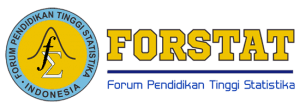How Competitive Is Life Sciences Industry in Indonesia
HOW COMPETITIVE IS LIFE SCIENCES INDUSTRY IN INDONESIA: COMPARED TO OTHER WORLD COUNTRIES
DOI:
https://doi.org/10.34123/jurnalasks.v7i2.22Keywords:
life sciences, Indonesia, competitiveness, foreign direct investmentAbstract
Indonesia is the South East Asia’s largest economy and has a substantial and increasingly inspirational middle class of over 20 million. Indonesia has become an attractive market due to her strongly growing consumer market, especially the middle income segment. The high number of population also indicates the existing potential pool of labour. Life Sciences (LS) industry is widely recognised as the new wave of knowledge-based economy. This study identifies relative position of Indonesia in terms of foreign direct investment (FDI) in LS industry and competitiveness of the LS industry in Indonesia compared with other countries. Based on LS sector, Indonesia has to compete mainly with Portugal, Turkey, Saudi Arabia and Nigeria, while based on LS activities, Argentina and Bulgaria are the main competitors. It also reveals that FDI inflow to LS industry in Indonesia is influenced mainly by inflation and return on investment.
Downloads
References
Azam, M and Lukman, L.2010. Determinants of Foreign Direct Investment in India, Indonesia and Pakistan: A Quantitative Approach. Journal of Managerial Sciences. Vol. IV, No. 1, pp. 31-44.
Baltagi, B.H. Econometric Analysis of Panel Data. John Wiley and Sons.1995.
Chakrabarti, A.2001. The Determinants of Foreign Direct Investment: Sensitivity Analyses of CrossCountry Regressions. KYKLOS. Vol. 54, pp. 89-114.
Crespo, Nuno and Fontoura, Maria P.2007. “Determinant Factors of FDI Spillovers- What do We Really Know?”. World Development. Vol.35, No. 3, pp 410-425.
Gertler, M.S., and Vinodrai, T.2009. LS industry and Regional Innovation: One Path or many?. European Planning Studies. Vol.7, No.2.
Gordon. I.1999. Internationalization and Urban Competition. Urban Studies. Vol. 36. No. 5-6 pp. 1001-1016.
Jones Lang LaSalle.2012. LS Cluster Report-Global.
Khondoker and Mottaleb, A.2007. Determinants of Foreign Direct Investment and Its Impact on Economic Growth in Developing Countries. MPRA Paper No. 9457.
Komite Pemantauan Pelaksanaan Otonomi Daerah.2008b. Local economic governance in Indonesia: A survey of businesses in 243 regencies/cities in Indonesia, 2007. Jakarta, Indonesia: Komite Pemantauan Pelaksanaan Otonomi Daerah. Retrieved from http://www.kppod.org/datapdf/laporan/rating2007_eng.pdf
Nonnemberg, M.B., and de Mendonca, M.J.C.2004. The Determinants of Foreign Direct Investment in Developing Countries.
Phillips, P.W.B., and Ryan, C.D.2007. The Role of Clusters in Driving Innovation. Handbook of Best Practices. Chapter 3.11, pp. 281-294.
Sethi, D., Guisinger, S.E., Phelan, S.E. and Berg, D.M.2003. ‘Trends in foreign direct investment flows: a theoretical and empirical analysis’. Journal of International Business Studies. Vol. 34(4), pp. 315–326.
Sjoholm, F, and Lipsey, R.E.2010.FDI and Growth in East Asia:Lessons for Indonesia.
Storper, M.1997. The Regional World - Territorial Development in a Global Economy. New York: Guilford Press. Stremersch, S., and Dyck, W.V.2009. Marketing of the LS: A New Framework and Research Agenda for a Nascent Field. Journal of Marketing Vol. 73 (July 2009), pp. 4–30
Sum, N.L., and Jessop, B.2013. Competitiveness, The knowledgebased economy and Higher Education.
Tan, K.G, and Amri, M.2013. Subnational Competitiveness and National Performance: Analysis and Simulation for Indonesia. Journal of Centrum Cathedra. Vol. 6. Issue 2, pp 173-192 UNCTAD.2007. World Investment Report 2007: Transnational Corporations, Extractive Industries and Development.
Wall, R.S. and Burger, M.,2012. Research report: De Strijd om Kapitaal. Den Haag: Province of South-Holland.
Wignaraja, G.2002. Creating value: From comparative to competitive advantage. Competitiveness Strategy in Developing Countries. Executive Forum on National Export Strategies.















